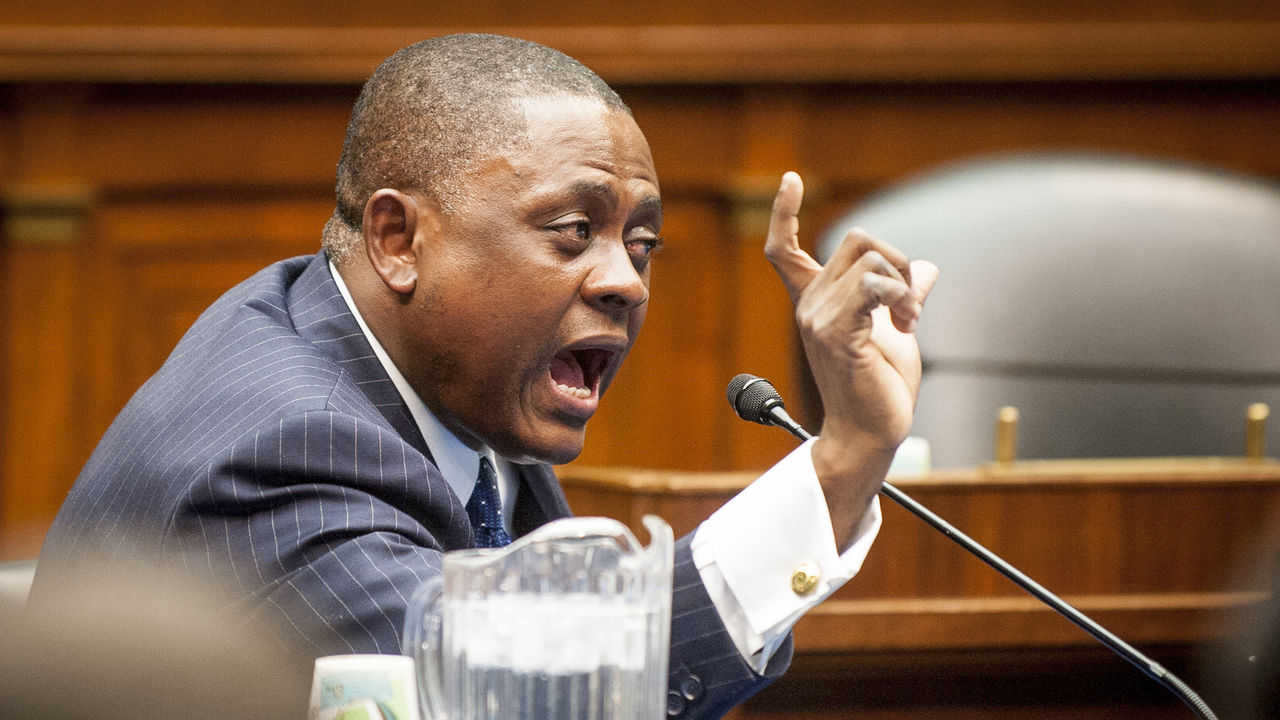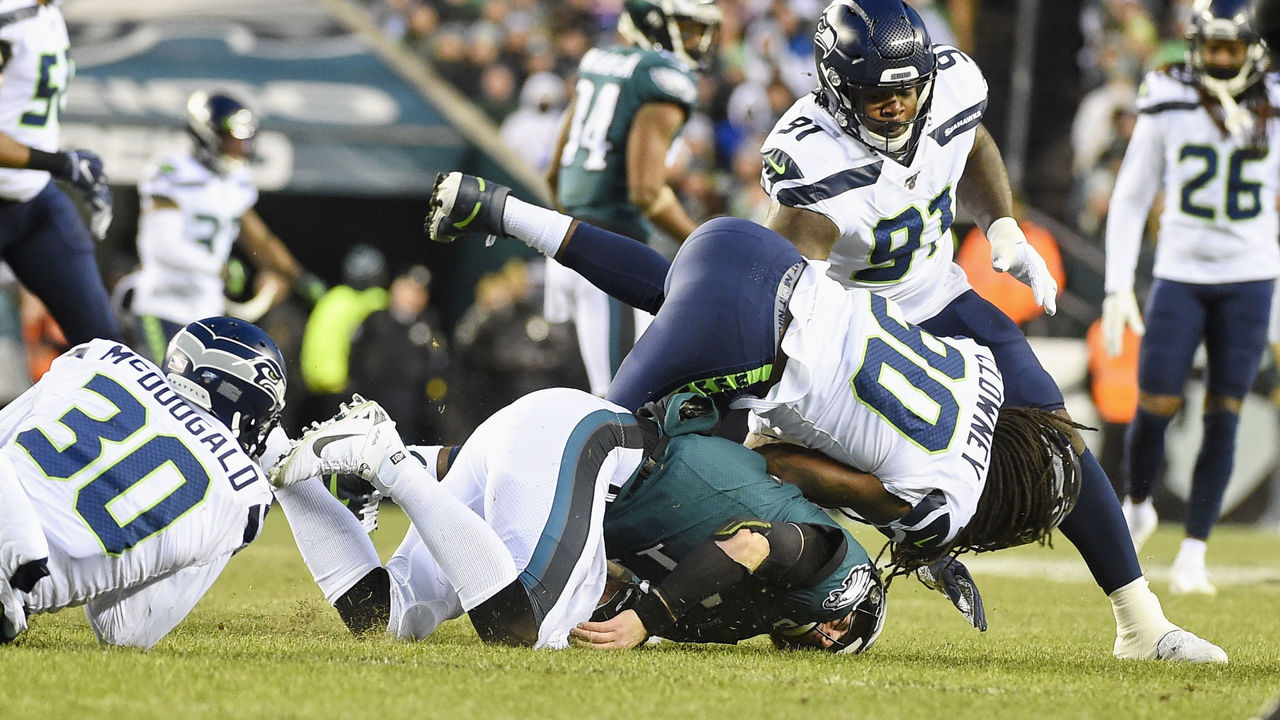Impact of CTE doctor's tattered legacy is buried in the details
A few weeks ago, the Washington Post published a detailed takedown of Dr. Bennet Omalu, the forensic pathologist and neuropathologist widely credited with discovering chronic traumatic encephalopathy (CTE) and the inspiration for the protagonist played by Will Smith in the 2015 film "Concussion."
The Post's story alleges that Omalu "built a career off distorted science" and that he "routinely exaggerates his accomplishments and dramatically overstates the known risks of CTE and contact sports, fueling misconceptions about the disease." It was based on "interviews with more than 50 experts in neurodegenerative disease and brain injuries, and a review of more than 100 papers from peer-reviewed medical journals," and it made a persuasive case.
But the story's conclusion that Omalu garbled statistics and used his status as an authority on CTE to behave less like a scientist than an anti-football activist shouldn't obscure the impact of his initial work, which has undoubtedly been beneficial from a public health standpoint.

There is no doubt a kind of sensationalism has attached itself to CTE - for reasons that have nothing to do with Omalu. To take one example: A major study severely overstated the disease's prevalence - even when the underlying research was far more measured and nuanced - which led to lots of misguided framing by at least one major media outlet.
The result has been a single-minded focus on CTE that has been grist for advocates and denialists alike, even as the slow pace of CTE science is really just beginning. But this attention to CTE's existence - and to the reality of the potential impact of degenerative brain disorders and other injuries in former football players more generally - has on the whole done more good than harm. Though additional longitudinal studies are underway - and will take years to complete - there is a greater awareness of the possible risks.
As Philadelphia-based neurologist Scott Mintzer noted:
5. Omalu's exaggerations aren't justifiable.
— Scott Mintzer 🧠 (@scott_mintzer) January 25, 2020
But neither should they detract from the far more important bigger picture that CTE is clearly an enormous problem for the NFL (and possibly other sports as well).
"I do absolutely agree that it would be really good to see more attention focused not just on CTE, but many other long-term health risks (such as other brain diseases as well as other physical risks)," Dr. Kathleen Bachynski, an assistant professor in public health at Muhlenberg College, told me. "I've seen a little coverage of other issues such as Parkinson's disease and ALS, but certainly CTE is what tends by far to dominate most coverage."
As Ingfei Chen put it recently in the New Yorker, with a nod to Adam M. Finkel, an environmental-health scientist and expert on risk assessment at the University of Michigan School of Public Health:
To some extent, the dissension over CTE reflects two different perspectives from which we can view disease. Clinicians tend to focus on one patient at a time; when faced with incomplete evidence, a doctor may prefer to refrain from speculation, to avoid making an incorrect diagnosis. By contrast, Finkel said, public-health analysts tend to make decisions based on probabilities, weighing the risks and benefits of taking protective actions in an effort to intervene before it's too late. It might take fifty years of research to figure out exactly how blows to the head cause CTE. "A public-health person would never say, 'We can wait fifty years,' without thinking about the consequences of putting the decision off for that long," Finkel said. He argues that football is so ingrained in American life that CTE is best seen through the lens of public health.
This has manifested itself in many ways. The NFL, in conjunction with its players' union, has instituted protocols for dealing with and managing concussions, in addition to working to improve those procedures over the years. Yes, the league at times has scapegoated the protocol for breakdowns that put players at undue risk, but it has typically responded by eventually working to add additional safeguards, rather than to chip away at the process. During last season's playoffs, Eagles quarterback Carson Wentz even elected to remove himself from a game after experiencing concussion symptoms - a genuine triumph of head-trauma awareness for a game rooted in managing violence.

"There's a reason that public-health analysts, when faced with imperfect scientific information, tend toward pessimism: they're entrusted with the task of safeguarding the citizenry, so they err on the side of safety," Chen wrote in the New Yorker. "Parents may find themselves in an analogous position."
Likewise, as the NFL's negotiations with its players' union seem to progress toward a new collective bargaining agreement - remember: nothing is settled until there's an actual accord - it's hard not to overlook the impact players' health is having on discussions.
The latest reports on the status of the labor talks include (among other things) proposals such as a 17-game schedule, expanded playoffs, additional revenues for the players, reductions in padded training camp practices, benefits increases, and improved pensions - including a boost for pre-1993 players, who've been getting a pittance.
The impetus for the additional regular-season game and two more playoff teams is the excess revenue they would bring - for the owners and players alike - through more programming for television networks. The league is eager to lock down an agreement before the presidential election season heats up so it can sell the networks on the prospect of labor peace.

The league's owners voted Thursday to approve "terms on the principal elements" of a new CBA, with the NFLPA's player reps scheduled to vote Friday before handing things off to the rank and file for a possible vote next week.
A new CBA isn't done, of course. The devil will ultimately be in the details, and the players may yet decide to demand more to offset the physical toll of that extra meaningful game. But what's leaked so far about what may be in the deal appears to be some sort of emphasis on player health and safety, both in the short and long term. Workplace rules were also one of the few gains the players made during the negotiations that led to the current CBA. None of this would have been possible without Omalu bringing the specter of traumatic brain injuries for football players into the public consciousness, regardless of what he's since done with himself.
Dom Cosentino is a senior features writer at theScore.